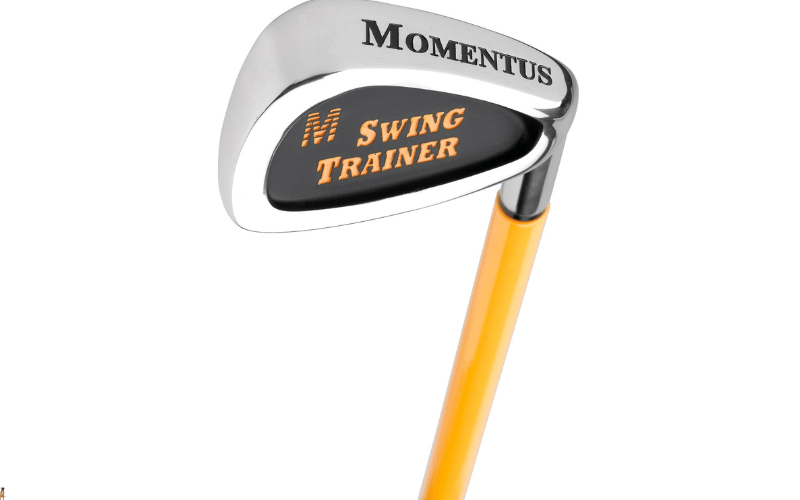Key Takeaways
- Weighted golf clubs can enhance swing speed by training the body to handle different weights, improving muscle memory.
- Correct grip and posture are crucial when using weighted clubs to prevent injury and maximize benefits.
- Consistent practice with a focus on tempo and rhythm helps in maintaining control while increasing speed.
- Transitioning from lighter to heavier clubs in practice sessions aids in progressive strength and speed development.
- Common mistakes include overemphasizing power, which can lead to loss of control and increased risk of injury.
Introduction to Weighted Golf Club Techniques
Golf is a game of precision, patience, and practice. For those looking to enhance their swing speed, weighted golf clubs offer an innovative approach. These clubs are not just about adding heft; they are about training your muscles and improving your swing mechanics. When used correctly, they can significantly improve your performance on the course.
Most importantly, the key to success with weighted clubs lies in understanding how to use them effectively. This article will guide you through the techniques and tips necessary to maximize the benefits of weighted golf clubs.
Understanding Weighted Golf Clubs
Weighted golf clubs are designed to be heavier than standard clubs, with the extra weight distributed either throughout the club or concentrated in specific areas like the clubhead. This design is intended to help golfers develop muscle strength and improve their swing speed over time.
“The research is clear showing 5% swing speed gains in about 6 weeks of regular practice,” says a study on weighted clubs. This highlights the potential benefits of incorporating these tools into your practice routine.
When you swing a weighted club, your muscles are forced to work harder, which can lead to increased muscle strength and endurance. Over time, this can translate to faster swing speeds when you switch back to your regular clubs.
Benefits of Using Weighted Clubs for Swing Speed
Weighted clubs offer several benefits beyond just increasing swing speed. They help improve your overall muscle memory, allowing you to maintain consistency in your swing mechanics. Moreover, they can aid in developing a better feel for the clubhead, which is crucial for making accurate shots.
Besides that, using weighted clubs can enhance your timing and coordination. As you practice with these clubs, your body learns to adjust to the added weight, which can lead to more efficient energy transfer during your swing. This means you can hit the ball farther and with greater accuracy.
Essential Techniques for Using Weighted Golf Clubs
To get the most out of your weighted golf clubs, it's important to focus on proper techniques. This involves understanding the correct grip, posture, and swing mechanics. Let's dive into each of these aspects.
Correct Grip and Posture
The grip is the first point of contact with the club, and it's essential to get it right. A proper grip ensures that you have control over the club and can swing it effectively. When using weighted clubs, make sure your grip is firm but not too tight. This allows for a smooth swing motion, which is crucial for achieving consistent swing mechanics.
Posture is equally important. Stand with your feet shoulder-width apart, knees slightly bent, and back straight. This position helps you maintain balance and stability during your swing. Remember, a strong foundation is key to executing a powerful and controlled swing.
Swing Path and Impact Focus
Your swing path determines the trajectory of the ball, so it's crucial to get it right. When using weighted clubs, focus on maintaining a straight and consistent swing path. This helps ensure that your shots are accurate and powerful.
Impact focus is about hitting the ball at the right moment. With weighted clubs, timing is everything. Practice swinging through the ball, not just to it. This will help you maximize the energy transfer from the club to the ball, resulting in longer drives.
Tempo and Rhythm Consistency
Tempo and rhythm are often overlooked but are critical components of a successful golf swing. With weighted clubs, it's important to maintain a steady tempo throughout your swing. This ensures that you remain in control and can effectively manage the added weight.
Consistency in rhythm helps in developing a natural swing flow, making it easier to replicate the motion with your regular clubs. Practice swinging at a consistent pace, and soon it will become second nature.
Tips for Enhancing Swing Speed
Improving your swing speed requires more than just practice with weighted clubs; it involves a holistic approach that includes strength training, flexibility exercises, and the use of advanced feedback tools. Let's explore these elements in detail.
Incorporating Strength and Flexibility Drills
Strength and flexibility are the cornerstones of a powerful golf swing. To boost your swing speed, incorporate exercises that target your core, shoulders, and legs. These muscle groups play a significant role in generating power during your swing. For more tips, check out these consistent golf swing drills.
- Core Exercises: Planks, Russian twists, and medicine ball throws can help strengthen your core, providing stability and power.
- Shoulder Workouts: Exercises like shoulder presses and lateral raises enhance shoulder strength, allowing for a more controlled swing.
- Leg Drills: Squats and lunges build leg strength, crucial for maintaining balance and generating force.
- Flexibility Routines: Yoga and dynamic stretching improve flexibility, enabling a fuller range of motion during your swing.
Progression Through Lighter to Heavier Clubs
When training with weighted clubs, it's essential to progress gradually from lighter to heavier clubs. This method helps your muscles adapt to the increased load without sacrificing form or control. Start with a club that's slightly heavier than your regular one, and as your strength and confidence grow, move on to heavier options.
This progression not only builds strength but also enhances your ability to control the club, leading to more consistent and powerful swings. It's important to listen to your body and avoid pushing too hard too quickly, as this can lead to injury.
Using Feedback Tools for Improvement
Feedback tools, such as swing analyzers and launch monitors, provide valuable insights into your swing mechanics. These devices can help you identify areas for improvement, such as swing path, speed, and impact angle.
By analyzing this data, you can make informed adjustments to your technique, leading to better performance on the course. Many golfers find that using feedback tools regularly helps them track their progress and stay motivated. For more insights, check out our guide on achieving consistent swing mechanics.
Additionally, consider recording your swings and reviewing the footage. This visual feedback can be incredibly helpful in identifying subtle changes that could enhance your swing speed and overall technique.
Common Mistakes and How to Avoid Them
- Neglecting proper warm-up routines.
- Using weighted clubs exclusively without practicing with regular clubs.
- Focusing solely on swing speed instead of overall technique.
- Ignoring the importance of rest and recovery.
It's easy to get caught up in the excitement of increasing your swing speed, but it's crucial to maintain a balanced approach. Avoiding these common mistakes will help you make steady progress while minimizing the risk of injury.
Many golfers fall into the trap of thinking that faster is always better. While speed is important, it's equally vital to maintain control and accuracy. Swinging too hard can lead to erratic shots and potential injury.
Overemphasizing Power Over Control
One of the most common mistakes golfers make is focusing too much on power and not enough on control. While a powerful swing can be impressive, it's worthless if you can't control where the ball goes. To avoid this, practice maintaining a steady tempo and focus on hitting the ball squarely.
Remember, a controlled swing with good contact will often result in better distance and accuracy than a wild, uncontrolled swing.
Ignoring Core and Lower Body Engagement
Your core and lower body are integral to a successful golf swing. Many golfers rely too heavily on their arms and shoulders, neglecting the power that comes from their core and legs. Engaging these muscle groups not only increases power but also helps maintain balance and stability throughout the swing.
To ensure you're using your entire body effectively, practice drills that emphasize lower body movement and core engagement. This will help you generate more power and achieve a more fluid, efficient swing. For more tips, check out these consistent golf swing drills.
The Role of Consistent Practice in Improvement
Consistent practice is the key to improvement in any sport, and golf is no exception. Regular practice sessions help reinforce good habits and build muscle memory, making it easier to replicate your swing under pressure.
Set aside dedicated time each week to practice with both weighted and regular clubs. Focus on different aspects of your swing, such as grip, posture, and follow-through, to ensure you're developing a well-rounded technique.
Tracking your progress is also important. Keep a journal of your practice sessions, noting any improvements or challenges you encounter. This will help you identify patterns and make informed adjustments to your training routine.
Importance of Routine Practice Sessions
Routine practice sessions are vital for improving your golf skills, especially when using weighted clubs. Consistency helps you build muscle memory, allowing your body to adapt to the increased weight and develop a more powerful swing. It's essential to practice regularly, focusing on both technique and strength.
Consider setting a schedule that includes a mix of weighted club practice and traditional club practice. This approach ensures that you don't become overly reliant on the weighted clubs and can seamlessly transition your improved skills to the golf course.
Tracking Progress and Setting Goals
Tracking your progress is crucial for staying motivated and ensuring continuous improvement. Keep a journal or use a golf app to record your practice sessions, noting any changes in swing speed, accuracy, or distance. This data will help you identify trends and areas that need further attention. For more on improving your swing, check out these consistent swing mechanics tips.
Setting realistic goals is another important aspect of improving your golf game. Whether it's increasing your swing speed by a certain percentage or improving your accuracy, having clear objectives will guide your practice sessions and keep you focused on your long-term development.
Frequently Asked Questions
Many golfers have questions about using weighted clubs and how they can impact their game. For those looking to enhance their equipment knowledge, check out these pro tips to avoid common golf equipment rule violation penalties. Here are some of the most common inquiries, along with detailed answers to help you make the most of your practice.
By understanding the benefits and techniques associated with weighted clubs, you can enhance your swing speed and overall performance.
How do weighted clubs improve swing speed?
Weighted clubs improve swing speed by challenging your muscles to work harder during practice. This increased effort leads to greater muscle strength and endurance, which translates to faster swings when using regular clubs. For more on enhancing your swing, consider these consistent swing mechanics tips.
“This system includes our 3 specifically weighted training clubs and access to our full online training program,” explains a popular golf training program. “The research is clear showing 5% swing speed gains in about 6 weeks of regular practice.”
Additionally, using weighted clubs helps refine your swing mechanics. As you practice with the added weight, your body learns to execute a more efficient swing, resulting in improved speed and accuracy.
It's important to remember that consistency is key. Regular practice with weighted clubs will lead to the best results over time.


Can using weighted clubs help beginners?
Yes, weighted clubs can be beneficial for beginners, but it's essential to approach their use with caution. Beginners should focus on mastering the fundamentals of grip, posture, and swing mechanics before incorporating weighted clubs into their practice routine.
“A popular question my students ask is if they should swing a weighted golf club,” notes a seasoned golf instructor. “My answer is always the same … NO … but it does need some clarification.”
For beginners, weighted clubs can help develop strength and muscle memory, but it's crucial to start with lighter weights and progress gradually. This approach ensures that beginners build a solid foundation without risking injury or developing bad habits.
How often should I practice with weighted clubs?
The frequency of practice with weighted clubs depends on your skill level and goals. For most golfers, incorporating weighted club practice 2-3 times a week is sufficient to see improvements without overtraining.
- Start with shorter sessions, focusing on technique and control.
- Gradually increase the duration and intensity as your strength and confidence grow.
- Alternate between weighted and regular clubs to maintain a balanced practice routine.
Remember to listen to your body and adjust your practice schedule as needed. Rest and recovery are just as important as practice in preventing injury and ensuring long-term progress. For more tips, explore consistent golf swing drills to enhance your practice routine.
Are there specific drills for weighted club training?
Yes, several drills can enhance your training with weighted clubs. These drills focus on different aspects of your swing, such as tempo, balance, and power generation.
For example, the “Swing Slow, Swing Fast” drill involves alternating between slow, controlled swings and faster, more powerful swings. This drill helps develop a consistent tempo and improves your ability to generate speed when needed. For more tips on enhancing your golf skills, check out these best golf accessories.
What are common benefits of improved swing speed?
Improved swing speed offers several benefits for golfers of all skill levels. One of the most noticeable advantages is increased distance. A faster swing speed allows you to hit the ball farther, which can be a significant asset on the course.
Additionally, enhanced swing speed often leads to better accuracy. As your muscles become stronger and more coordinated, you'll have greater control over your swing, resulting in more consistent and precise shots.

